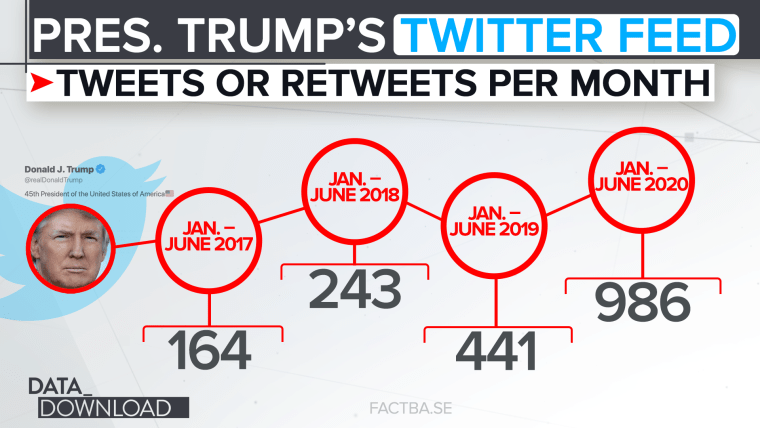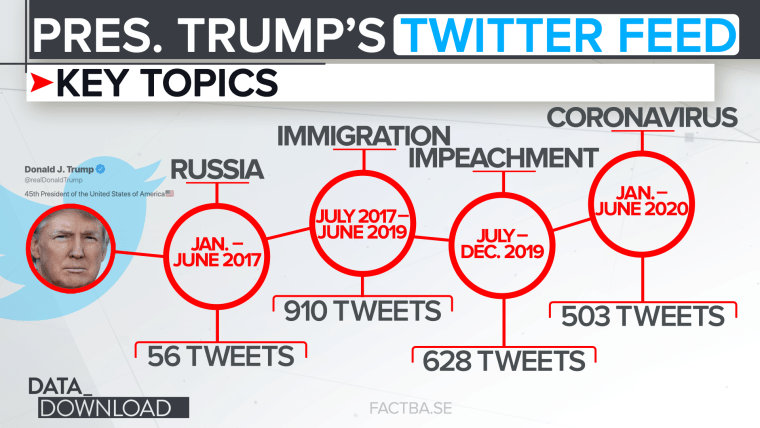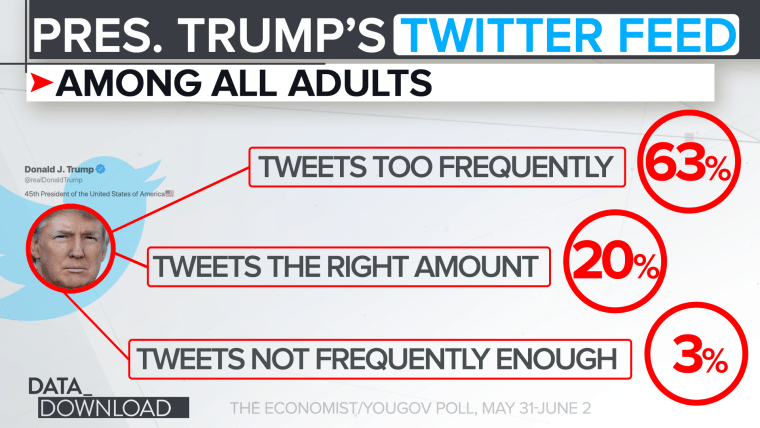WASHINGTON — For President Donald Trump, Twitter is more than a social media platform, it is a direct line to voters. It lets him drive news coverage, but it also has come to define him.
A close look at the president’s feed shows how it has changed over the course of his presidency as he has tried to gain control over the forces that have buffeted this White House. It also shows how the social media chatter has grown — and grown — leaving the Trump campaign with a crucial question as Election Day grows closer.
Is Trump’s Twitter account, 83 million followers strong, an asset or liability?
From the moment Trump arrived in the White House, it became clear that his use of social media was going to be different than that of his predecessor, Barack Obama. Data from Factba.se, which tracks the president’s use of social media, show how Trump used Twitter to push his policy agenda, and to defend himself.

Shortly after Trump’s inauguration, he was dealing with the departure of National Security Adviser Michael Flynn, who resigned over his contacts with a Russian ambassador, and the appointment of Special Counsel Robert Mueller to investigate the matter. And for the first five-plus months of Trump’s presidency (through June), the word “Russia” was a mainstay on his account, appearing a total of 56 times in his feed — more than a long list of other keywords including “immigration,” “China” or “trade.”
Once Trump settled into the White House, Twitter became a place for him to talk about his policy objectives. From July to December 2017, all of 2018 and the first half of 2019, Trump’s main keyword was “immigration.” In the first half of 2019 alone, “immigration” appeared in 367 tweets and retweets.
In the second half of 2019, as the story of the Trump administration’s contacts with Ukraine first broke and grew into a formal congressional inquiry, Trump’s Twitter feed shifted gears and was dominated by “impeachment.” In that short time, that word appeared in more than 628 tweets and retweets on his account.
And by the first half of this year, the dominant keyword had changed to “virus.” From January to June that word or forms of it appeared in more than 500 tweets. “Impeachment” had fallen to a distant No. 2 at 279 tweets and “China” appeared in 211 tweets.
In short, the story of the Trump administration’s trials and tribulations, the hopes and fears of the White House, is written in 280-character (or less) snippets.
But the real story of Trump and Twitter may be more about the sheer volume of tweets than the topics. Since Trump took office, the monthly number of tweets has skyrocketed, if you look at the averages over six-month intervals, again using Factba.se as a source.

For the first five months of Trump’s presidency (not counting the last 10 days of January 2017), he tweeted (and retweeted) an average of roughly 160 times month. From July to December 2017, the figure grew rapidly to an average of 260 times per month.
Since July to December 2018, the number of tweets and retweets has grown in every six-month period. And in the last six months, from January to June 2020, the number reached a remarkable average of 986 tweets and retweets a month.
That growth in Twitter usage since the beginning of his time in the White House, from 164 to 986 tweets and retweets, equals a roughly five-fold increase.
To be clear, a lot of that increase comes in the form of retweeting other Twitter users. But when he does that, the president is still trying to direct the national conversation, using the words and ideas of others to aid his efforts.
The underlying trend in the data is unmistakable. The president sees Twitter as an important way to reach his supporters and to say what he thinks needs to be said. He seems to feel that even more deeply as the news cycle gets harder for him. And that may be a growing problem for his re-election hopes.
Polls consistently show most Americans do not like the amount of time the president spends on Twitter.

A June poll found 63 percent of Americans believed the president tweets “too frequently.” That Economist/YouGov survey, found only 20 percent believe the president tweeted the right amount, while a scant 3 percent believe he tweets too little.
The survey is not an outlier. It falls in line with a long list of polls showing the same thing. In interviews, even the president’s supporters often say they wish he tweeted less. And that looks like an especially challenging problem for Team Trump now.
General-election polls consistently show Trump trailing badly in head-to-head matchups against presumptive Democratic presidential nominee Joe Biden. The numbers suggest Trump needs to reset the race and to present himself differently.
That kind of rebranding is a tall order for any incumbent. But it looks even harder in 2020 with an incumbent who consistently reminds voters of something they don’t not like about him — every day in 280-character snippets.